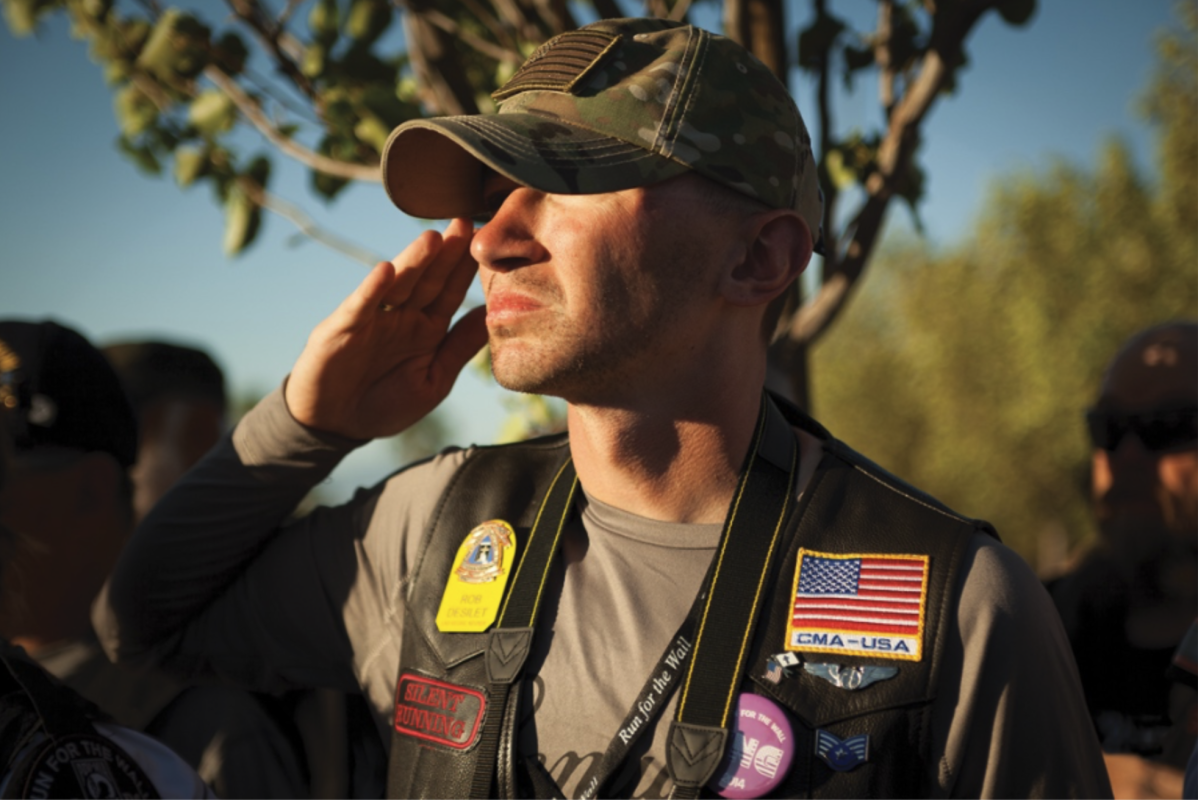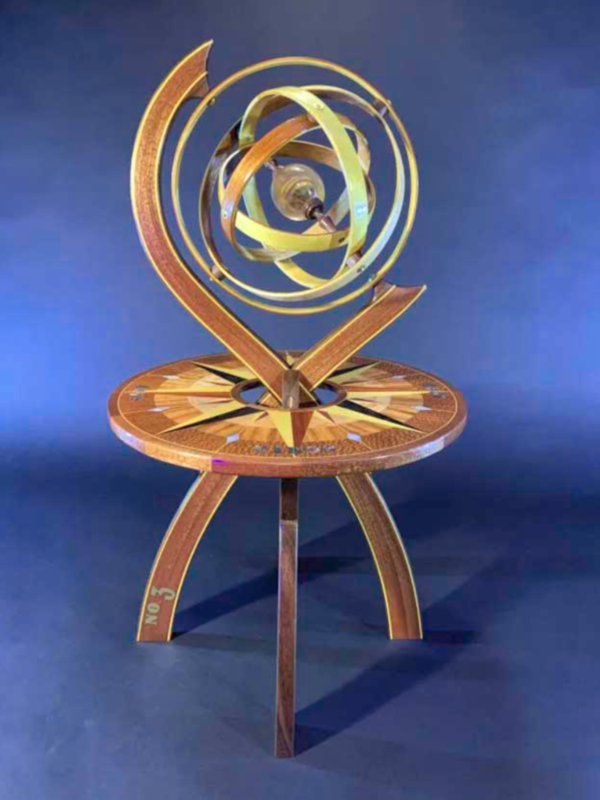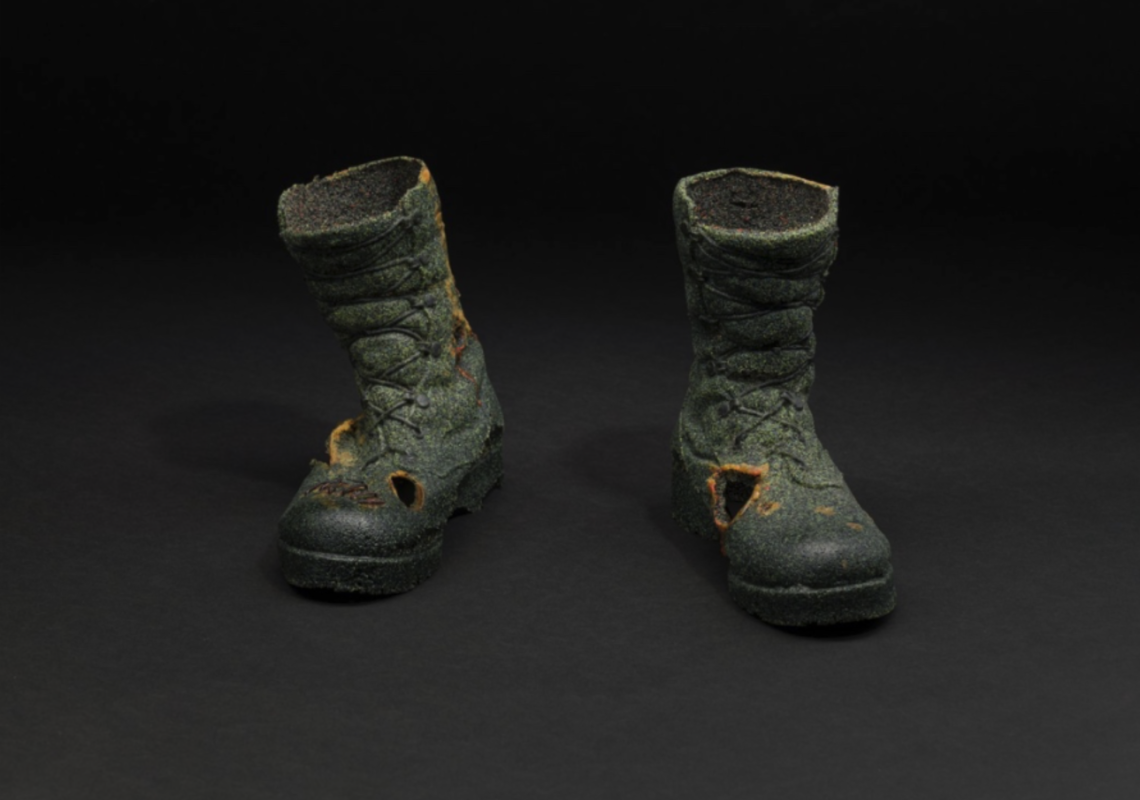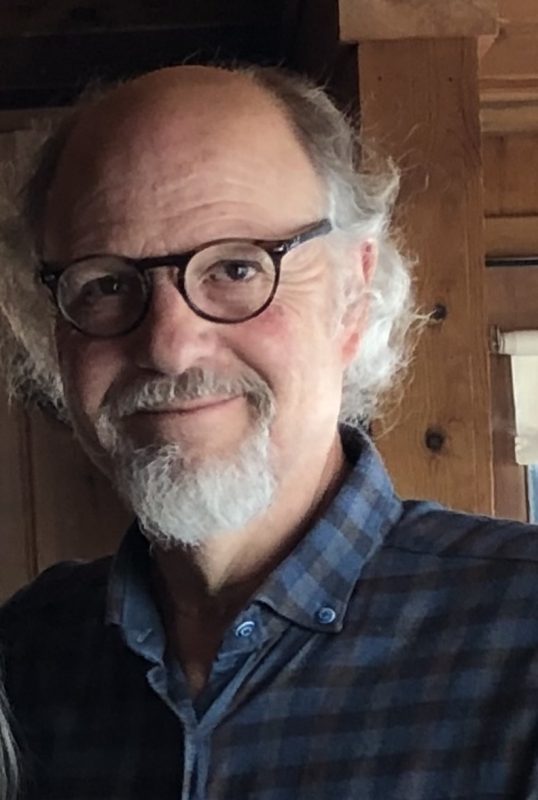November 4 – 27, 2022
Bainbridge Arts & Crafts
151 Winslow Way East
Bainbridge Island, WA 98110
(206) 842-3132
Gallery Hours: Monday – Saturday 10 – 6PM, Sunday 11 – 5PM
I am not qualified to write about the impetuses of the artwork in this show. I can only really
describe physical works, with opinion and observation, and attempt to empathize and
understand the origins and deep source of their expressions. However, I do appreciate the
movement and journey they represent. I am familiar with the very important GI Bill
(Serviceman’s Readjustment Act) of 1944. Those who served WWII were offered education and
job training among other benefits. * One development was the craft education many service
people sought. Our local BARN (community craft school) was somewhat modeled, early on, on
the Army Arts & Crafts Program studio designs. While on continuous offer, a renewed push for
the healing for those engaging in art-making was the Resiliency Through Art Initiative of 2012.

The three artists do take us on a journey, or rather, three journeys. Ones that work through
experiences with glass, work that diligently labors to seek a healing through intricate, laborious
and astounding woodwork, and one that seeks to reflect a collective journey of remembrance
and healing among fellow brothers and sisters who served. Centrally presented is a collection
of Pate de Verre glass sculptures by Geoffrey Bowton. Representational, they are castings made
of glass powder and tiny glass shards. The forms are military objects and clothing that bare the
tragic recognition of war’s effects. The thin-walled hollow forms reflect the delicacy of body and
mind ravaged by war. Ultimately, Bowton says his works “embraces tensions between these
contradictory materials and multi-faceted experiences – to promote conversation about
identity, trauma, damage, repair, and healing.”

James Anderson first tried glass work as a participant in the Hot Shop Hero Program of the
Tacoma Museum of Glass after he left the military. He later moved over to woodworking where
he excelled, in part because of its time-consuming labor and joy of discovery. Several sculptures
of Anderson’s take the shape of armillary sphere models reminiscent of Nicolaus Copernicus’s heliocentric models of the universe of the 1500s. However, Anderson has impacted deeper
meaning to the sculptures. For instance, in one, he used twenty-two kinds of hardwood
representing “the current suicide rate of twenty-two per day” of current or former soldiers.
While that sounds both extravagant and sad, it is not unusual for Anderson’s enthusiasm for the
material journey he is on for his own healing journey. In his “ #2 “ sculpture, he has used 12
different species of domestic and exotic hardwoods, abalone shell, and mother of pearl. The
work took over 1,000 hours to experiment and build, using a wide variety of techniques. “Its
construction took 35 custom jigs, forms, molds and fixtures and used steam-bent lamination,
machining his own veneers, parquetry, woodturning, epoxy casting among other techniques.”
These are by definition, or at least my opinion, tour-de-force artworks. Their easy beauty belies
the depth of meaning and sought-after healing within them. Anderson says that this work is a
good “distraction,” and feels “his progress at mastering woodworking contributes to his
becoming a better artist, a better human being.”

All three artists are award winning in their chosen fields. Bowton and Anderson are still “new”
to their mediums of glass and wood. They both sought out new possibilities after retiring from
the 5/20 th Battalion (Sykes Regulars) and 75 th Ranger Regiment, respectively. Ron Stewart, on the other hand, was introduced to the camera by his father around age 9, and was probably never far from his interests ever since. Stewart has been a professional photographer, including commercial directing and videography, for over 30 years. While Stewart did not serve, his
father was in the Airforce. Therefore, when invited to be embedded in one of the “Run for the Wall” motorcades to record the journey, he was honored and humbled.
The twenty or so large photographs, pinned informally along three walls of the gallery, belie the
structure and formality of the motorcycle journey itself. The planning was highly structured,
hierarchical, and carried out with military form. The roughly 2500-mile run was divided into
three groups taking three routes to the Memorial Wall in Washington D.C.. The selection of
photographs are arranged chronologically. Stewart tried to show the range of activity, a sense
of the meaning of the journey, although a collective gathering, ultimately a deep individual
journey. From roughly 12,000 photographs taken for the book project, several hundred were
presented in the several hundred-page picture book, and reduced further for this gallery
exhibition. It is a documentary actually, which is both accessible in the gallery space as well as
available at Eagle Harbor Books next door. Stewart says of the series, “my hope is that my
photographs convey the patriotism, dedication, camaraderie, brotherhood, resiliency and the
human experience of the veteran community.”
[* It was so much more. However, Black citizens were not equally afforded these benefits.] [See: “Service,” a Craft in America film, 2014, with sneak peek @ https://www.craftinamerica.org/short/g-i-bill-artists-segment]
[Run for the Wall : A Journey to the Vietnam Memorial by Kristine J. Wood, photographs by Ron Stewart. 2017]
CLICK HERE TO READ OTHER FIRST FRIDAY FOCUS & EBB and FLOW ARTICLES BY BILL
Ebb & Flow: Wes King and Andrea Roby King of the Roby King Gallery
Ebb & Flow: Hilltop Artists Exhibit
Ebb & Flow: Pete Saloutos Photography
Ebb & Flow: Three Visions of the Northwest with Brooke Borcherding, Taralee Guild & Paul Polson
Ebb & Flow: KidsUp: The Next Generation of Play
Ebb & Flow: The Art of Jan and Chris Hopkins
Ebb & Flow: “Threads of Connection” Jason Devinney and Caroline Cooley Browne

ABOUT BILL BARAN-MICKLE: 2020 Island Treasure Awardee. Recently, Bill has enjoyed exhibiting in several international art biennial exhibitions. Of the three in which he has participated, he won Third Place for Sculpture from the European Confederation of Art Critics in the Chianciamo Biennale, at the Chianciano Art Museum in Italy in 2011, and First Place in Applied Arts in the London Biennale of 2013. In 2013 alone, he will have participated in eight exhibitions: from London to a two-person exhibition near home. In addition, Bill was asked to be a representative for CCAC’s exhibition celebrating 100 years of the Metals Department, and a mix of group shows in New York City, Miami, Seattle and Las Vegas. Bill is the designer of the 10 foot Equitorial Bowstring Sundial located at the Richie Observatory in Battle Point Park on Bainbridge Island, WA and completed in 2015.